WGS – Wideband Global Satcom
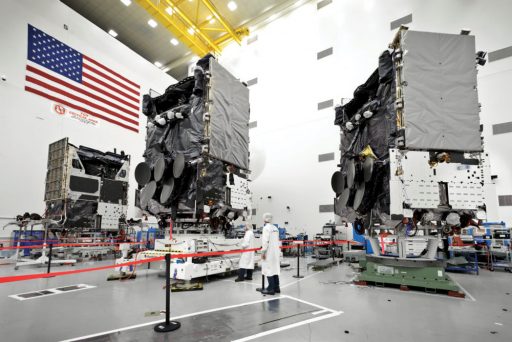
WGS – The Wideband Global Satcom System is a U.S. satellite constellation providing communications for military operations around the globe, supporting soldiers, ships, and aircraft including unmanned drones used for surveillance and intelligence gathering operations around the globe.
The U.S. Department of Defence selected Boeing Space Systems in 2001 for the WGS satellites as a replacement for the Defense Satellite Communications System 3 in operation from the 1980s into the 2000s. WGS was initiated to deliver newer and greater capabilities to the warfighter by deploying a constellation of high-throughput satellites to Geostationary Orbit.
The WGS constellation represents the primary communications system for the Department of Defence operated alongside the specialized AEHF operated by the Air Force and the Navy’s MUOS mobile communications system.
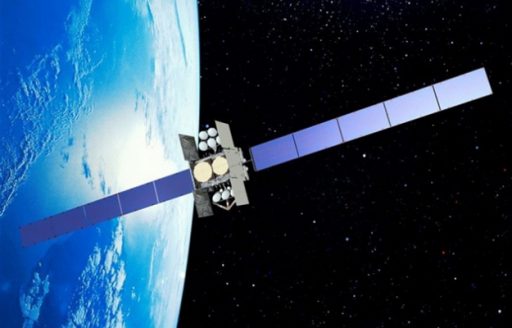
WGS is designed to enhance and augment heritage communications from the DSCS-3 satellites, delivering Super High Frequency (SHF) wideband communications, and Ka-band Global Broadcast Service (GBS). The WGS satellites make use of modern satellite communications systems such as phased array antennas and digital signal processing technology to create a powerful architecture with a high degree of flexibility.
Each standard WGS satellite offers 4.875 GHz of instantaneous switchable bandwidth corresponding to a capacity of 2.1 to 3.6 Gbps depending on the ground terminals, data rates and modulation profiles that are employed. Effectively, each WGS satellite can supply more than ten times the capacity of a DSCS- 3 satellite. The Block-2 WGS satellites can deliver a data throughput of 6Gbps and the modified Block II satellites achieve 11 Gbps.
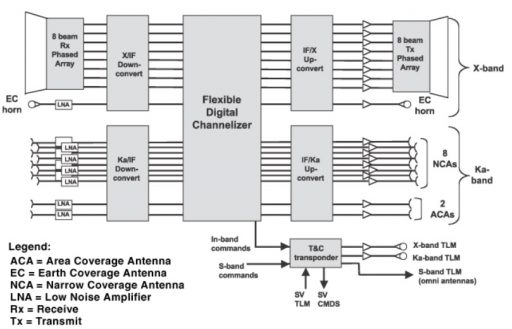
The WGS satellite delivers 19 independent coverage areas divided in eight steerable/shapeable X-Band beams delivered by separate transmit and receive arrays, ten steerable Ka-Band beams provided by ten independently steerable dish antennas and one X-Band Earth Coverage beam. Data can be delivered in the form of unclassified, in-the-clear broadcast signals and fully encrypted signals received by large platforms on ships and aircraft down to communications packages carried by individual soldiers.
One major upgrade provided by WGS is X-Ka-Band inter-connectivity delivered by a digital channelizer which divides the uplink bandwidth into independently routable 2.6MHz subchannels which can be converted from Ka-to-X-Band and vice versa. The channelizer also supports multicast and broadcast services and provides flexible uplink monitoring for network control.
Operation and usage of the WGS System is divided into three segments – the Space Segment with the Satellites, the Control Segment which operates the satellites, and the Terminal Segment which corresponds to user terminals on the ground. Users of WGS include the U.S., Canada and Australia.
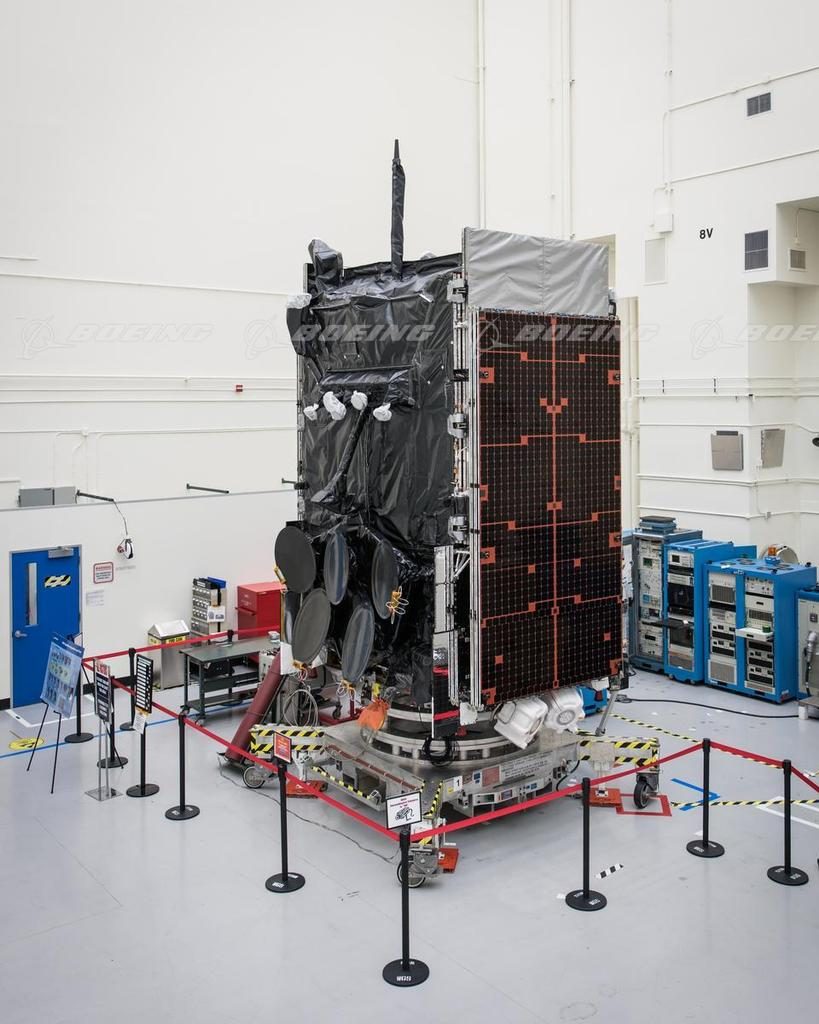
The first three WGS satellites are known as the Block I Group of Satellites that were part of the initial deal with Boeing signed in January 2002. WGS-1 lifted off on an Atlas V rocket in October 2007 followed by the other two in 2009, lifted by Atlas V and Delta IV rockets.
Block II was inaugurated in 2012 with the launch of WGS-4 and features a number of upgrades including a radio frequency bypass capability for optimized services to airborne intelligence, surveillance and reconnaissance platforms (Unmanned Aerial Vehicles) requiring ultra-high bandwidth and data rates. WGS-5 and 6 were launched in 2013 followed by WGS 7 in 2015.
WGS 8, launched in 2016, marks the first in the Modified Block II satellites, hosting an upgraded digital channelizer which enables a 90% improvement in available bandwidth compared to previous WGS spacecraft. The new channelizer makes use of the latest Application Specific Integrated Circuit technology to be more efficient in converting uplinked data to digital signals which can then be moved internal to the satellites ahead of reconversion and downlink.
WGS-9, set for liftoff in March 2017, represents the international contribution to the program with funding for the satellite provided by Canada, Denmark, the Netherlands, Luxembourg and New Zealand in exchange for access to bandwidth from the entire global constellation.
Each WGS satellite has a launch mass of around 5,987 Kilograms and is based on Boeing’s BSS-702HP satellite platform.
WGS is based on Boeing’s BSS-702HP satellite platform, the high-power configuration of the 702 bus that can support the most powerful communications payloads with state of the art onboard systems including precise pointing capability and the use of flight-proven components and built-in redundancy to ensure the satellite meets its in-orbit lifetime of 15 years.
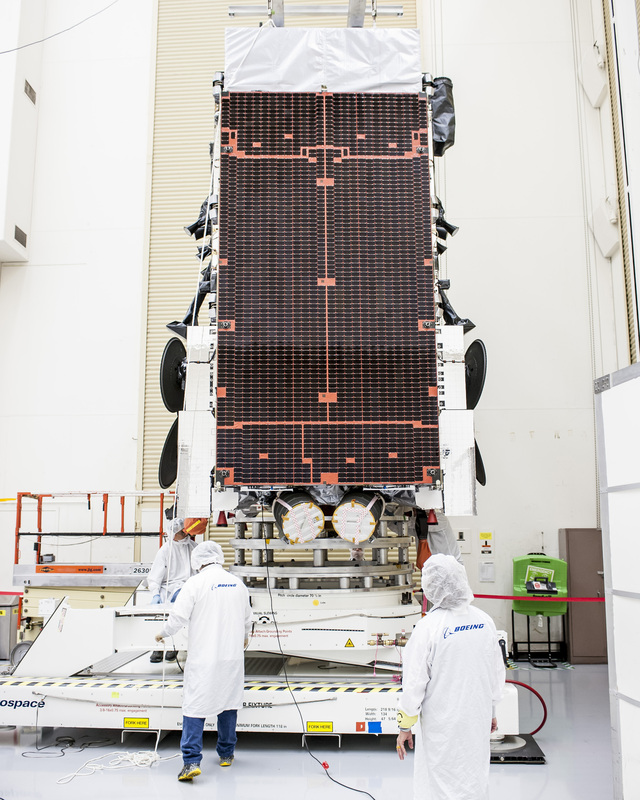
The two deployable solar arrays each have five wings that are covered with ultra triple-junction gallium-arsenide solar cells which deliver an end-of-life power of at least 11 Kilowatts. Power is stored in dual Lithium-Ion batteries and dedicated avionics regulate the main power bus of the spacecraft to provide power to all subsystems of the satellite bus and the communications payload. When deployed, the satellite’s solar arrays give the spacecraft a span of 41 meters.
WGS combines a chemical propulsion system in use for the initial climb to Geostationary Orbit with an electrical propulsion system to fulfill stationkeeping tasks and extend the satellite’s lifetime beyond that of pure liquid-fueled spacecraft.
The R-4D main engine employed by WGS is Monomethylhydrazine/Nitrogen Tetroxide Engine that provides 490 Newtons of thrust. The engine is 0.55 meters long and 0.28 meters in diameter with an unfueled mass of 3.63 kilograms. The engine provides a specific impulse of 312s, has a thrust to weight ratio of 13.7 and operates at a chamber pressure of 6.9 bar. The original RD-4 was developed as an attitude control thruster for the Apollo Service and Lunar Lander modules. RD-4 engines were built by Kasier Marquardt.
Typically, 702HP is equipped with a 490-Newton bipropellant apogee motor for the climb into Geostationary Orbit. In addition, the satellite uses four axial 22-Newton Thrusters and four radial 10-Newton thrusters for smaller orbit adjustments, drifting in Geostationary Orbit and attitude maneuvers.
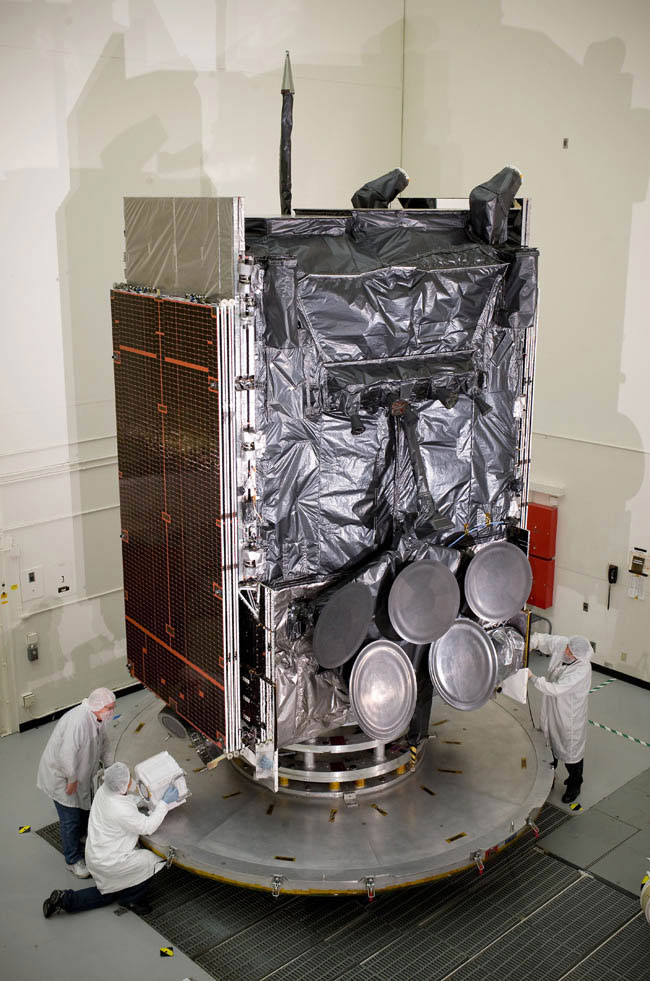
XIPS, the Xenon Ion Propulsion System, has flown on numerous spacecraft and is ten times more efficient than the conventional chemical propulsion systems, the only disadvantage being the low thrust that can be achieved with the system leading to a longer time frame needed between launch and Beginning of Service. Ion thrusters generate thrust by accelerating ions through the use of an electric field and ejecting these ions at extremely high velocity creating thrust force propelling the spacecraft forward.
Although ion thrusters deliver a very low thrust, they are extremely efficient and consume only a very small amount of propellant. The method of ion acceleration varies between the use of Coulomb and Lorentz force, but all designs take advantage of the charge/mass ratio of the ions to create very high velocities with very small potential differences which leads to a reduction of reaction mass that is required but also increases the amount of specific power compared to chemical propulsion.
The XIPS-25 system used by the 702SP spacecraft consists of a central Xenon tank and four 25-centimeter ion thrusters. Required power varies between 1,300 and 4,500 Watts achieving a thrust of up to 165 Millinewtons and a specific impulse of 3,500 seconds. Two of the four thrusters are used as primary units at any given time and stationkeeping in Geostationary Orbit will require four burns for a total of about 30 minutes per day to maintain the satellite within a 0.01 degree stationkeeping zone which allows many satellites to be collocated in a single orbital slot.
WGS hosts a powerful communications payload for secure and fault-proof communications. It provides steerable spotbeams that can reach any position within the satellite’s field of view between 65 degrees north and south latitude. Two-way Ka- (1GHz) and X-Band (500MHz) communications are supported by the Spacecraft which also provides a capability to convert signals from one to the other with its onboard systems.
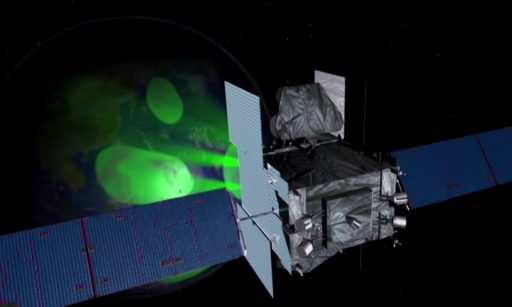
A total of 19 independent coverage areas that can be used throughout the field of view of each satellite. These include 8 steerable X-Band beams provided by separate transmit and receive phased arrays as well as 10 steerable Ka-Band beams that are formed by steerable, diplexed gimbaled dish antennas.
The remaining coverage area is an X-Band Earth Coverage beam. WGS can tailor coverage in near-real time and connect X-Band and Ka-Band Users anywhere within the field of view.
The WGS Fleet is controlled by four Army Wideband Satellite Operation Centers that receive telemetry and send commands to up to three satellites per center. Telemetry and command links are available via X- and Ka-Band. Spacecraft platform control and stationkeeping maneuvers as well as orbital planning is accomplished by the 3rd Space Operations Squadron stationed at Shriver Air Force Base.
